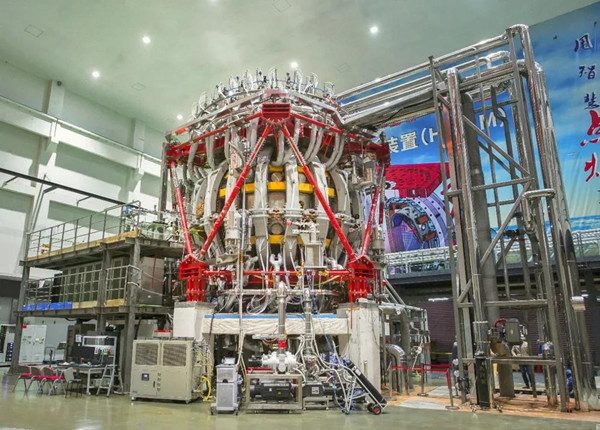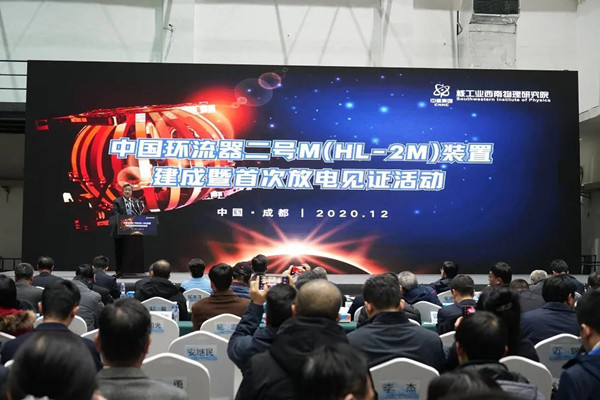New Generation 'Artificial Sun' Goes into Operation
The HL-2M Tokamak, China's new-generation "artificial sun" device, completed its first discharge on Dec 4 in Chengdu, Southwest China's Sichuan province.
The operation proved that China has mastered design, construction and operation of advanced large-scale Tokamak devices, laying a solid foundation for the country's nuclear fusion reactor development.
With the best parameters, the device has a more advanced structure and control mode than its predecessors in China. It is a base device of the leapfrog development of the nuclear fusion industry in China and an indispensable platform of relevant technologies for the country's involvement in the International Thermonuclear Experimental Reactor project.
Approved by the China Atomic Energy Authority (CAEA) in 2009, the HL-2M Tokamak project was independently designed and built by Southwestern Institute of Physics, a subsidiary of China National Nuclear Corporation.
As development of nuclear fusion energy plays a significant role in China's energy strategy and offers sustainable development of the economy and future energy, CAEA is now working on an integrated innovative system of nuclear fusion research and planning to build a national nuclear fusion innovation platform. The platform will allow exchanges between experts and scholars at home and abroad and be an incubator of young scientists. The efforts are expected to improve China's competitiveness in the nuclear fusion industry.
It's worth mentioning that based on the HL-2M Tokamak device, the company has developed several key technologies for manufacturing of special materials and key facilities and precise instruments dedicated to extreme conditions, which have been adopted in fields like space science, aviation and electronic industries.

A view of the HL-2M Tokamak, China's new-generation "artificial sun" device that completed its first discharge on Dec 4 in Chengdu, Southwest China's Sichuan province [Photo/sasac.gov.cn]

A ceremony is held on Dec 4 to announce the completion of the HL-2M Tokamak device and to carry out the device's first discharge experiment. [Photo/sasac.gov.cn]
(Executive editor: Wang Ruoting)



